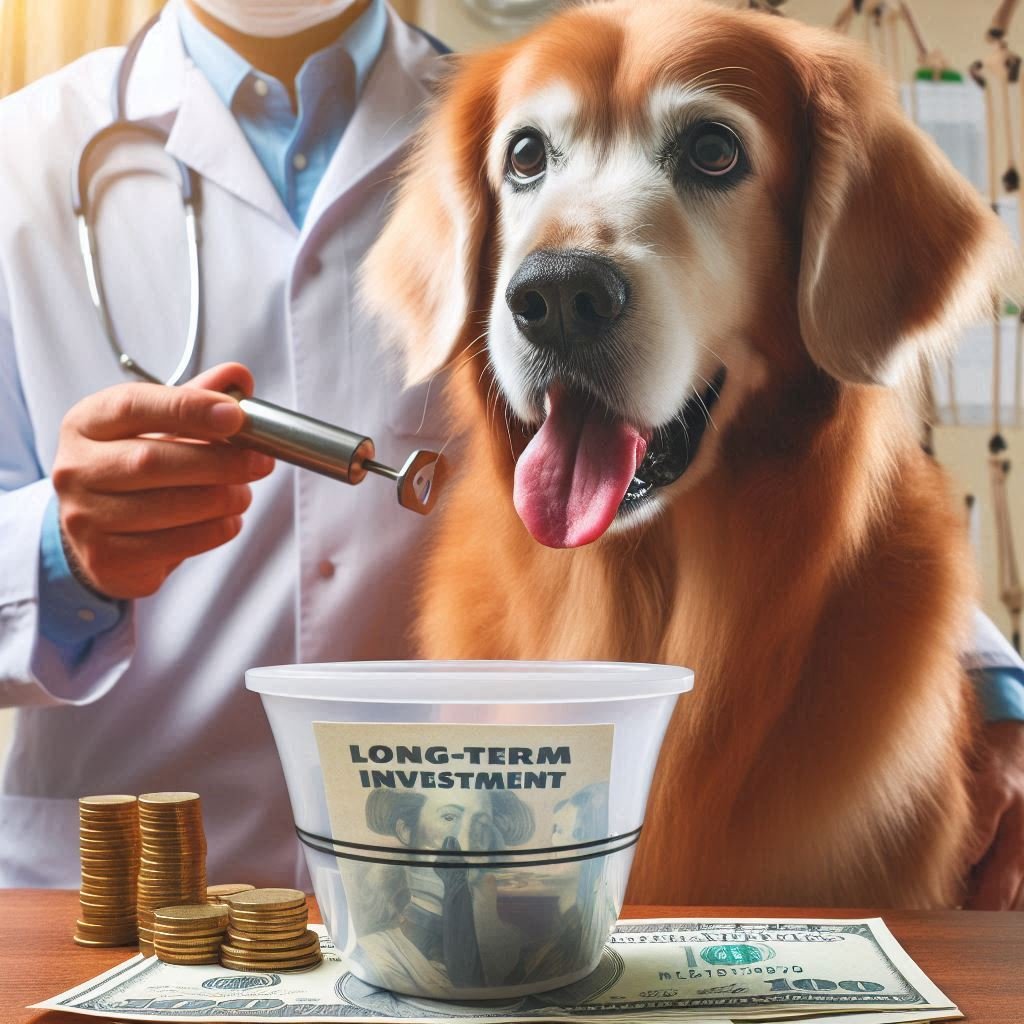Imagine you own a beautiful old clock, one that has been ticking faithfully for years. It’s not just any clock—it’s a family heirloom, filled with history, its chimes echoing through the house like the laughter of loved ones. One day, the hands of the clock begin to falter, moving unevenly. The gears inside have worn down, and the once-reliable mechanism now struggles to keep time.

You now stand at a crossroads.
Do you replace the entire inner mechanism, ensuring that the clock runs smoothly for years to come? Or do you oil the gears, tighten the screws, and hope for the best, knowing that time will inevitably wear them down again?
This is the same dilemma pet owners face when deciding whether to pursue hip replacement surgery for their beloved dog.
- The Hidden Gears of Cost
A dog’s hip is like the core mechanism of a clock—without it functioning properly, every other movement is affected. The cost of hip replacement surgery isn’t just about the price of the procedure itself—it’s about the hidden gears that keep the process running.
The Surgery (The New Mechanism) – The hip replacement itself is like replacing the entire gear system in a clock. The materials, precision, and expertise needed make it expensive—often ranging from $3,500 to $7,000 per hip.
Pre-Surgery Assessments (The Clockmaker’s Inspection) – Before a skilled watchmaker replaces the mechanism, they must assess the damage, fit, and compatibility. Similarly, a dog needs X-rays, blood tests, and evaluations before surgery, adding hundreds to thousands in costs.
Post-Surgery Care (Fine-Tuning the Gears) – Even a brand-new mechanism needs gentle winding and calibration. Post-surgical medications, therapy, and follow-ups can cost another $1,000–$2,500.
Long-Term Benefits (Timeless Value) – A restored clock doesn’t just tell time; it brings back comfort, beauty, and precision. Similarly, a dog with new hips gains years of pain-free movement, making the expense feel less like a cost and more like an investment.

- The Cost of Doing Nothing: The Broken Clock
Choosing not to fix a clock doesn’t stop time—it only makes telling time harder. Likewise, opting out of surgery doesn’t stop a dog’s hip deterioration—it simply shifts the burden to:
Pain management (Temporary fixes like oiling rusty gears) – Medications, joint supplements, and braces can add up over time. Over a few years, these costs can rival or exceed surgery.
Limited mobility (A clock that stops working) – As hips worsen, a dog’s world shrinks. Walks shorten, playtime fades, and soon, even standing up becomes a struggle.
Emotional toll (The sentimental loss of a beloved heirloom) – Watching a once-active dog slow down and suffer is heartbreaking. The real cost isn’t just financial—it’s the price of lost joy, lost movement, and lost time.
- The Final Choice: A Legacy of Motion
A clock, when restored, chimes again—a song of renewed life. A dog, after hip replacement, runs again—a testament to modern medicine and love.
So, what is the true cost of hip replacement?
Perhaps, it is not measured in dollars, but in wagging tails, joyful leaps, and extra years of cherished time—a price worth paying for a lifetime of movement.




